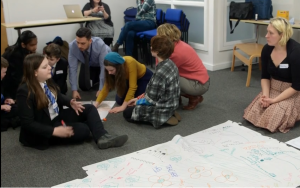Background: Each Friday all of the children across the school have the opportunity to take part in a Golden Time /Enrichment activity. Children would commit to that activity for the whole half term, then choose a new one for the following half term, and so on.
We found that certain activities had high numbers of girls and low numbers of boys, and vice versa. We decided to see if we could do anything to make address this imbalance.
- Firstly, we decided to rebrand the activities. This meant dropping the subject name (eg sewing ) and giving it a question as a title (eg Can you make your own clothes?)
- Then, each class discussed aspirations and interests as a circle time activity. Other activities were taken from the NUT’s ‘Breaking the Mould’ documents: https://www.teachers.org.uk/educationandequalities/breakingthemould
- All the children were also shown the display (shown below) and encouraged to comment on it and to respond to questions such as ‘Boys can’t sew. Agree or disagree?’
- Finally, the children were then given the opportunity to choose their new Golden Time / Enrichment activity. The results of this indicate that the childr
 en were more willing to participate in activities that stereotypes may have previously put them off doing. However, it is clear that there is still much more work to be done, particularly with enrichment activities such as the construction based group which currently has 21 boys and 1 girl.
en were more willing to participate in activities that stereotypes may have previously put them off doing. However, it is clear that there is still much more work to be done, particularly with enrichment activities such as the construction based group which currently has 21 boys and 1 girl.
Our next steps will include:
- Another circle time activity.
- Editing each signing up sheet so that half of the spaces are for girls and half are for boys. By doing this I hope to make it explicit that it is normal for boys and girls participate in all of the activities.


